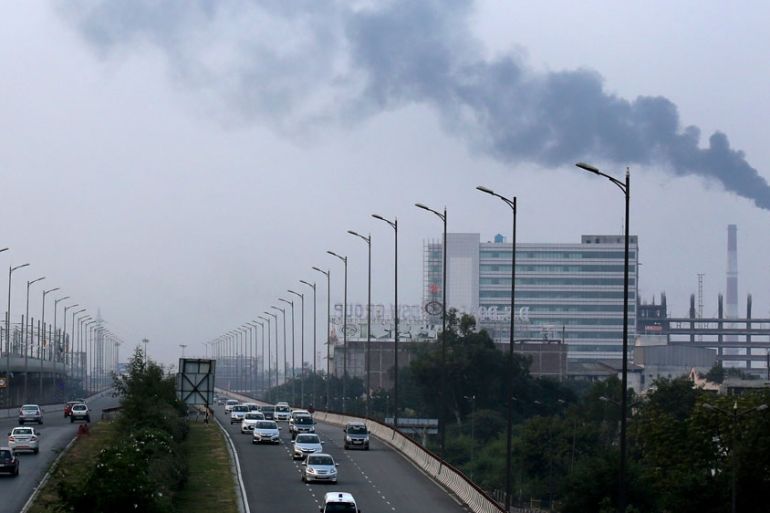Schools shuttered, buses banned as Indian capital takes pollution crown
New Delhi authorities are mulling a halt to construction activities as toxic smog envelops the city.

Schools across India’s capital New Delhi have been shuttered and construction activity halted as the city was declared the world’s most polluted.
The closures were ordered on Friday as air pollution rose to dangerous levels, with Swiss air quality monitoring group IQAir putting the Indian city at the top of a real-time list of the world’s most polluted cities.
Keep reading
list of 3 itemsAir pollution cuts life expectancy by five years in South Asia: EPIC study
Silent killer: Is air pollution deadlier than was feared?
The city woke up to a thick layer of toxic smog, and residents also complained of irritation in the eyes and itchy throats, triggering an order for some schools to be shut for two days.
IQAir put the city’s air quality index (AQI) at 611 in the ‘hazardous’ category. A reading of 0-50 is considered good. Anything between 400-500 is unhealthy.
“Unfavourable meteorological conditions, sudden increase in the farm fire incidents, and northwesterly winds moving the pollutants to Delhi are the major causes for sudden spike in AQI,” the region’s Commission for Air Quality Management said on Thursday.
Air pollution in New Delhi usually starts getting worse from November, exacerbated by the burning of crop stubble in the states of Punjab and Haryana, part of the farm belt that borders New Delhi.
The city also generates much of its own pollution aggravated by industrial emissions, vehicles’ exhaust fumes and dust from construction sites, and smoke from household fires adds to the murky mix.
The New Delhi government has announced a ban on the entry of diesel buses and said construction activities will be halted if the situation persists.
Moreover, with the city hosting a cricket World Cup match on Monday between Bangladesh and Sri Lanka, India’s cricket board (BCCI) also announced a ban on fireworks displays during the remaining matches of the tournament.
The dip in air quality in the New Delhi region during the winter months is often accompanied by a spike in respiratory illnesses.
In an interview with Al Jazeera last year, Dr Randeep Guleria, a pulmonologist and former head of the All India Institute of Medical Sciences (AIIMS) in New Delhi, said New Delhi’s poor air quality was an issue especially for vulnerable residents.
“When air quality is poor, it is infecting the vulnerable population – the younger children, the elderly, and those with co-morbidities, chronic respiratory disease or chronic cardiac problem. In children, it can also lead to a decrease in lung growth. As the child grows in this environment, the growth of the lung gets hampered,” he told Al Jazeera.